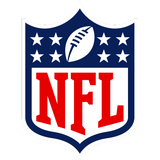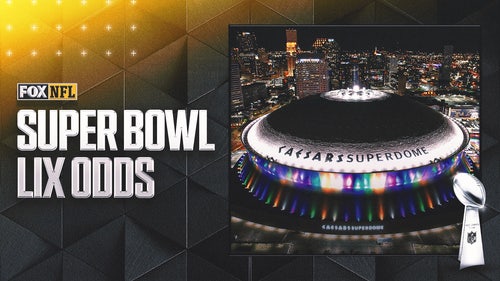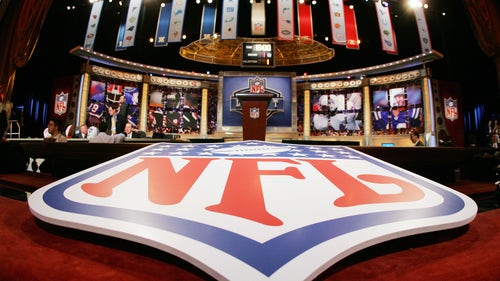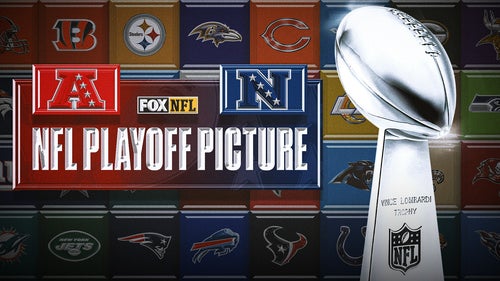
DeShone Kizer and the Fraternity of the Golden Dome QB

Entering last season, DeShone Kizer was just another quarterback buried on Notre Dame’s depth chart. He came to South Bend a three-sport high school athlete who never attended specialized quarterback camps. Now, he the guy who stood on the sideline with a backwards camouflage hat. Aside from mop-up duty in a lopsided season-opening win over Texas, the only time he got onto the field was on field-goal attempts; Kizer was Notre Dame’s holder.
In Week 2, the Fighting Irish were on the road in Virginia when starting quarterback Malik Zaire broke his ankle late in the third quarter. Kizer had already thrown his first collegiate touchdown pass that day, a shovel pass on a fake-field goal. The second TD pass would prove to be a harbinger of the next calendar year.
He had been thrust into action as Notre Dame tried to survive in Charlottesville, where two fourth-quarter TDs had given UVa a one-point lead with less than two minutes to go. The drive started at Notre Dame’s 20, and Kizer converted a fourth-and-2 on the first set of downs before taking the Irish into long-field goal range, at the UVa 39 with 19 seconds left. With pressure from the left side coming at him, he had to slide back and couldn’t fully step into the throw. Still, he arched a perfect pass to a streaking Will Fuller down the left sideline, the receiver hauling it in as he crossed the goal line.
“I’m watching that play,” says former Notre Dame quarterback Carlyle Holiday. “And I know right away. Here’s the guy. Here’s the next great Notre Dame quarterback.”
Adds Tony Rice, another member of the ND QB fraternity: “You knew right then.”
And Rick Mirer, the only Notre Dame quarterback to be selected in the draft’s top-five since the NFL-AFL merger: “The way he’s handled himself since that play makes you think he can succeed at the next level.”
Three weeks into the 2016 season Kizer, now a junior, has trampolined into the top tier of draft-eligible quarterbacks. He’s certainly at the top of the projected 2018 class, but also 2017 if he declares early. Scouts are seduced by Kizer’s size (6' 4", 230 pounds) and skill set: He can scramble, but is capable of functioning out of the pocket. He has a big arm, but also displays impressive touch and timing on his throws. His glittery statistics—in 16 career games: 3,599 passing yards, 63.0% completions, 8.69 yards per attempt, 30 TD passes and another 14 as a runner, 12 interceptions—are bolstered by something one evaluator could only describe as “the ‘it’ factor.” The 20-year-old has poise. Notre Dame fell out of the playoff discussion with its second loss of the season on Saturday, a dud against Michigan State, but Kizer alone kept the Irish afloat. The final score was 36-28, thanks to a spirited second-half comeback led by Kizer, who finished with 344 passing yards and four total touchdowns.
“This kid is special,” says Brady Quinn, Notre Dame’s most recent first-round QB (2007, 22nd overall to Cleveland). “You see a lot of natural athletes who play quarterback because they can throw the football and they’re fast and athletic and they can get a coach out of a bad call because they can scramble. DeShone can get out of the pocket and run, but he’s a natural passer. He can pass with different anticipations, different speeds.”
Jarious Jackson, a two-year starter at Notre Dame and now quarterbacks coach for the CFL’s Saskatchewan Roughriders, has been equally impressed: “He has great pocket presence, he moves around, he’s always ready to release the ball when guys are breaking, he gives them nice, catchable balls,” says Jackson, who spent parts of three seasons with the Denver Broncos (who selected him in the seventh round of the 2000 draft). “He’s a tough kid, and you can tell the other 10 guys on the field respond to him. I mean if you’re building a team, what other qualities would you want?”
Kizer’s resume seems flawless—but that’s not uncommon among Notre Dame quarterbacks. Since Joe Theismann and Joe Montana, seven Fighting Irish quarterbacks have been NFL draft picks, including three top-50 picks, but they have only one Pro Bowl season between them: Steve Beuerlein, a journeyman who was drafted in 1987 (fourth round, Raiders) and made the 1999 Pro Bowl with the Carolina Panthers, his fifth team. Is Kizer the one who will finally break through?
* * *
There’s a mystique about being the Notre Dame quarterback. There’s also a different kind of pressure specific only to South Bend.
Holiday, who ended up switching to wide receiver and played four seasons in the NFL: “There’s so much pressure outside just being a quarterback: pressure from alumni, pressure from student body, being on NBC every week. Not to mention going to class and being a student. It could be the same amount of pressure, maybe even more, than being an NFL quarterback.”
Rice: “Stress? It goes to a point where you pull your hair out. That’s why I’m bald-headed now. It seems like the whole world is looking at you. If you’re not producing, they’re just going to call for you to transfer or play another position.”
(Since Lou Holtz retired in 1996, 18 Notre Dame quarterbacks have either switched positions or transferred.)
Quinn, who played eight NFL seasons: “I mean, there were weekly press conferences at Notre Dame that had double the attendance of ones I had with the Browns.”
Mirer, who had a 12-year NFL career but never lived up to his billing as the second overall pick of the 1993 draft: “If you can survive the scrutiny that comes with the position [at Notre Dame], everything else feels normal and routine. The drama around big bowl games, opening day or any Saturday really, it was great preparation for scrutiny going into pre draft, the draft, and the NFL. Any media obligations after, were really no bigger than what you did in college.

“It seems like you know a lot about us [Notre Dame quarterbacks] by the time our college careers end because of the media exposure. Sometimes that’s good, sometimes not.”
Mirer would know. He perhaps best exemplifies the expectations bestowed upon Notre Dame quarterbacks when the going is good. Bill Walsh, who coached against Mirer while at Stanford, was not shy about comparing Mirer to Joe Montana. Four years after Mirer was selected by the Seahawks, he was traded to the Bears. He made three starts for Chicago in 1997, then six more with the Jets in ’99, and eight with the Raiders in 2003.
“When you’re on a team that expects to contend for a national championship every season, it’s a shock to be on a team that won two games the previous year,” Mirer reflects. “A lot of times you’re drafted high, you go to a team that’s not doing well. So it’s a culture shock that way, the belief in winning in some of those organizations isn’t anywhere close to what you’re used to.”
Though while Mirer, like Quinn and 2010 second-round flameout Jimmy Clausen, never became Montana, it’s hard to identify a common trait among the quarterbacks that led to their downfall. In recruiting, Notre Dame does not discriminate by region or style—quarterbacks have ranged from prototypical pocket guys to option QBs. Coaching staffs have cycled through. Most recently, in Charlie Weis’s pro-style system, the program groomed Quinn and then Clausen.
“I don’t really have a theory on why there are so many good Notre Dame quarterbacks who couldn’t find success in the NFL,” Mirer says. “Brady, he’s the guy that probably should have broken through. He’s as talented as any of us but it just shows you how hard it is. It’s a tough league, you have to fit into certain systems and sometimes it doesn't make sense.”
Quinn’s warning is even more explicit: “If DeShone goes to Cleveland next year, he’ll get a first-hand experience of very poor ownership and, unfortunately, a poor long-term and short-term vision of how to build success.”
Some time in the next year or two, Kizer will join an NFL team with all the attributes of a franchise quarterback. But ultimately, it fall on that team to mold him into the NFL’s first great quarterback to come out of South Bend since Joe Montana.
* * *
THE ANONYMOUS SCOUT

A few NFL evaluators introduce you to the players they’re keeping an eye on…
Mitch Leidner, QB, Minnesota: Tough kid, and has all the physical tools. Accuracy is a problem. As of now, too raw to take with a high pick.
Derek Rivers, DE, Youngstown State: Could be a riser if he performs well against better competition in all-star games. Long and strong. Converts speed into power. In two tapes I watched, wasn’t as fast around the edge as I expected but can get to the QB in a variety of ways.
Desmond King, CB, Iowa: Very strong instincts and ball skills. Good in run support and a willing tackler. Not exceptionally quick or the most athletic in this year’s class, but a ball hawk.
* * *
WHAT I’M WATCHING
All times Eastern…
No. 12 Georgia at No. 23 Ole Miss (Saturday, noon): Georgia has a budding star quarterback in freshman Jacob Eason. The Bulldogs just need balance with a better run game—even with stud running back Nick Chubb, Georgia averaged just 2.6 yards per carry in last week’s win over Missouri. Meanwhile it’s only Week 4, but this is a must-win for Mississippi, which has blown 21-point leads twice this season.
No. 11 Wisconsin at No. 8 Michigan State (Saturday, 3:30 p.m.): A battle in the trenches with playoff implications? This is Big Ten football at its finest. Wisconsin averages 48.7 rushing attempts per game, the Spartans average 46.0. Both teams are also stellar at stopping the run. MSU allows 72.0 rushing yards per game, the Badgers 82.3. Something has to give. One stat not to be overlooked: Michigan State is 21-1 at home since 2013.
No. 17 Arkansas vs. No. 10 Texas A&M (in Arlington, Texas, 9 p.m.): The Razorbacks look to start 4-0 for the first time since 2003, and they have a chance to do it under the bright lights at AT&T Stadium, and under the watchful eye of donor/alum/super fan Jerry Jones. Meanwhile, Kevin Sumlin and the Aggies (no stranger to hot starts) feel like the only SEC school poised to knock off Alabama. A win over Arkansas would cement A&M’s status as true contenders.
* * *
FACTOID OF THE WEEK
Western Michigan was paid a combined $1.6 million by Big Ten schools Northwestern and Illinois to be added to the schedule. WMU won both games.
* * *
PICK MY GUY

A current NFL player explains why his former collegiate teammate is destined for success as a pro. Here’s Vikings wide receiver Laquon Treadwell hyping his one-time quarterback at Ole Miss, Chad Kelly.
“When I first met Chad, I knew right away he was very competitive. I just thought it was something he was trying to do to win over the starting spot. But even when he became the starter, it never slowed down. Chad is a competitor. He wants to win every play. He wants to get better every day. He has a great arm, he can drop back, scramble, roll out, be a pocket passer, whatever you want in a quarterback he can do it. He’d throw a lot of deep posts to me. Ball placement is something he does really well, especially going deep, and he makes it look easy. I think all of our guys can make it in the NFL, but no doubt Chad is up there. He’s a great team guy. When he first came to Mississippi he had this theme song (released on YouTube when he was on Clemson’s roster) and everyone was playing it in the locker room. The coaches played it too. But Chad took it for what it was, he wasn’t embarrassed. He’s a cool dude and by the end of the season everyone respected him.”
* * *
SAVAGE’S SENIORS
Former NFL GM and current Reese’s Senior Bowl Executive Director Phil Savage highlights senior match-ups he’ll be keeping an eye on this week.
Arkansas TE Jeremy Sprinkle vs. Texas A&M FS Justin Evans (Saturday, 9 p.m.): Sprinkle (6' 6", 256 pounds) is an athletic big man who is taking over the No. 1 tight end role at Arkansas after junior Hunter Henry declared for the 2016 draft. As a complementary player in 2015, Sprinkle grabbed 27 passes for 389 yards (14.4 avg) and six touchdowns. Through three games as a senior, he already has nine catches for 97 yards (10.8 avg) and three scores. A versatile prospect, he has the capacity to be an end-line blocker, and the route savvy to threaten the middle of the field. Evans (6' 1", 195 pounds) is maybe the most underrated defensive player in the SEC. After transferring in to A&M from Mississippi Gulf Coast Community College last year, he notched 78 tackles and an interception, but delivered some ferocious hits. In three games thus far in 2016, he has registered 25 total tackles, broken up three passes and intercepted two others. An explosive tackler, he will be a household name as one of the nation’s top draft-eligible safeties next spring.
Best of the Rest:
Louisiana Tech WR Trent Taylor vs. Middle Tennessee CB Jeremy Cutrer
Georgia G Greg Pyke vs. Ole Miss DT D.J. Jones
Wisconsin DE Vince Beigel vs. Michigan State TE Josiah Price
LSU C Ethan Pocic vs. Auburn DT Montravius Adams
Question or comment? Email us at talkback@themmqb.com.
This article originally appeared on











